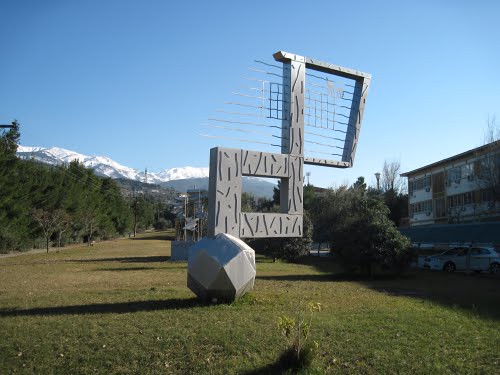

Αυτός ο ιστότοπος χρησιμοποιεί cookies για να βελτιώσει την εμπειρία σας κατά την πλοήγησή σας. Από αυτά, τα cookies που χαρακτηρίζονται ως απαραίτητα αποθηκεύονται στο πρόγραμμα περιήγησής σας, καθώς είναι απαραίτητα για τη λειτουργία των βασικών λειτουργιών του ιστότοπου. Χρησιμοποιούμε επίσης cookies τα οποία δεν είναι απαραίτητα για τη λειτουργία της ιστοσελίδας, αλλά βελτιώνουν την εμπειρία σας στην ιστοσελίδα. Έχετε τη δυνατότητα να εξαιρεθείτε από αυτά τα cookies. Όμως, η εξαίρεσή σας ενδέχεται να επηρεάσει την εμπειρία περιήγησής σας
Τα cookies αυτά είναι ουσιαστικής σημασίας για την ορθή λειτουργία του ιστότοπου, σας επιτρέπουν να κάνετε περιήγηση και να χρησιμοποιήσετε τις λειτουργίες του, όπως πρόσβαση σε ασφαλείς περιοχές. Αυτά τα cookies δεν αναγνωρίζουν την ατομική σας ταυτότητα. Χωρίς αυτά δεν μπορούμε να προσφέρουμε αποτελεσματική λειτουργία του ιστότοπου μας συνεπώς είναι υποχρεωτικώς προεπιλεγμένα. Ο ρόλος των cookies αυτών είναι η αποθήκευση πληροφοριών ή η απόκτηση πρόσβασης σε ήδη αποθηκευμένες πληροφορίες στη συσκευή σας, με αποκλειστικό σκοπό τη διενέργεια της διαβίβασης µιας επικοινωνίας µέσω δικτύου ηλεκτρονικών επικοινωνιών ή, σε βαθμό που είναι απολύτως αναγκαίο για την παροχή υπηρεσίας της κοινωνίας της πληροφορίας, την οποία έχει ζητήσει ρητά ο χρήστης ή ο συνδρομητής. Επιπρόσθετα, μέσω των τεχνικώς απαραίτητων cookies αποθηκεύονται οι επιλογές του επισκέπτη που αφορούν την αποδοχή των cookies καθώς και των κατηγοριών cookies που αφορά η αποδοχή αυτή. Σύμφωνα με τη σχετική νομοθεσία, δεν έχετε τη δυνατότητα να επιλέξετε αν θα απορρίψετε την εγκατάσταση των cookies αυτών, καθώς χωρίς αυτά δεν θα ήταν τεχνικά εφικτή η παροχή υπηρεσιών εκ μέρους μας.
Τα cookies αυτά δεν είναι απαραίτητα για τη λειτουργία της ιστοσελίδας, αλλά βελτιώνουν την εμπειρία σας στην Ιστοσελίδα, παρέχοντας μία σειρά από χρήσιμες δυνατότητες, όπως η αποθήκευση επιλογών σας (π.χ. γλώσσα ή όνομα χρήστη), η προβολή βίντεο ή ο διαμοιρασμός περιεχομένου στα μέσα κοινωνικής δικτύωσης
Τα αναλυτικά cookies χρησιμοποιούνται για την κατανόηση του τρόπου με τον οποίο οι επισκέπτες αλληλεπιδρούν με τον ιστότοπο. Αυτά τα cookie βοηθούν στην παροχή πληροφοριών σχετικά με μετρήσεις όπως ο αριθμός των επισκεπτών, το ποσοστό εγκατάλειψης, η πηγή επισκεψιμότητας κ.λπ.
Τα cookies αυτά συλλέγουν πληροφορίες σχετικά με τον τρόπο που οι επισκέπτες χρησιμοποιούν τον ιστότοπο, για παράδειγμα, ποιές σελίδες επισκέπτονται συχνότερα και αν λαμβάνουν μηνύματα σφαλμάτων από ιστοσελίδες. Αυτά τα cookies συλλέγουν συγκεντρωτικές, ανώνυμες πληροφορίες που δεν ταυτοποιούν κάποιον επισκέπτη. Τα στοιχεία αυτά χρησιμοποιούνται αποκλειστικά για τη βελτίωση των επιδόσεων της ιστοσελίδας μας. Τα cookies αυτά αποθηκεύονται στον υπολογιστή ή στην κινητή συσκευή σου για μέγιστη διάρκεια 2 χρόνια
Τα cookie διαφήμισης χρησιμοποιούνται για την παροχή στους επισκέπτες προσαρμοσμένες διαφημίσεις με βάση τις σελίδες που επισκεφτήκατε προηγουμένως και για την ανάλυση της αποτελεσματικότητας των διαφημιστικών καμπανιών.
